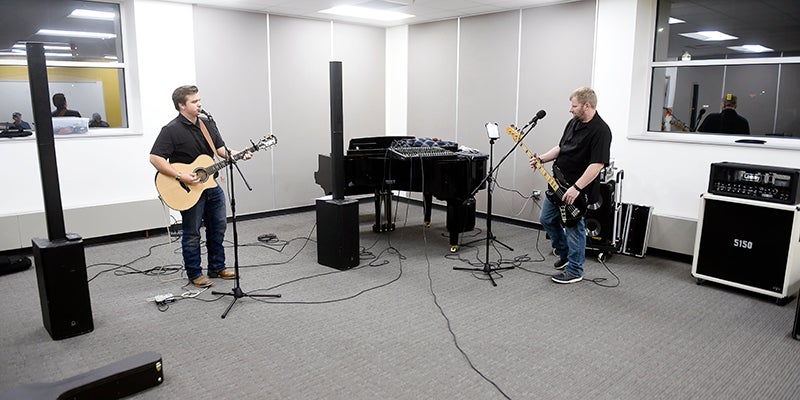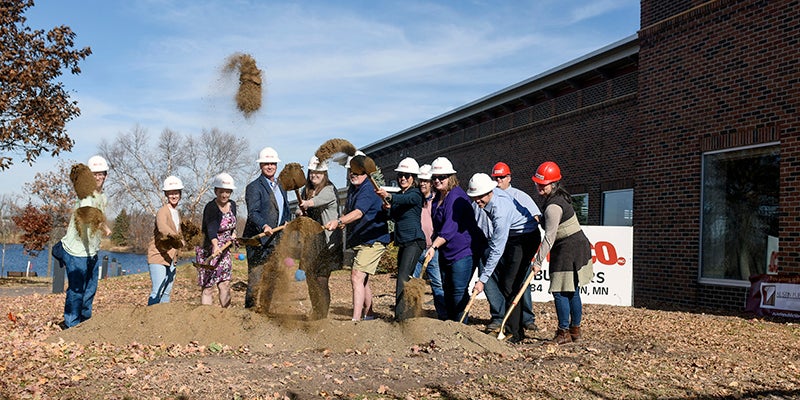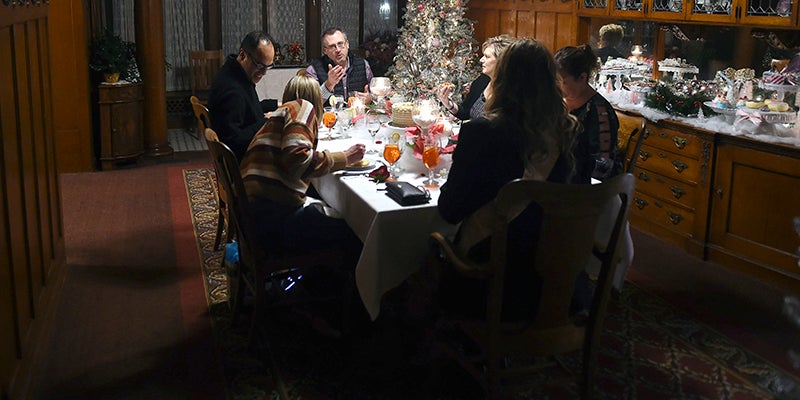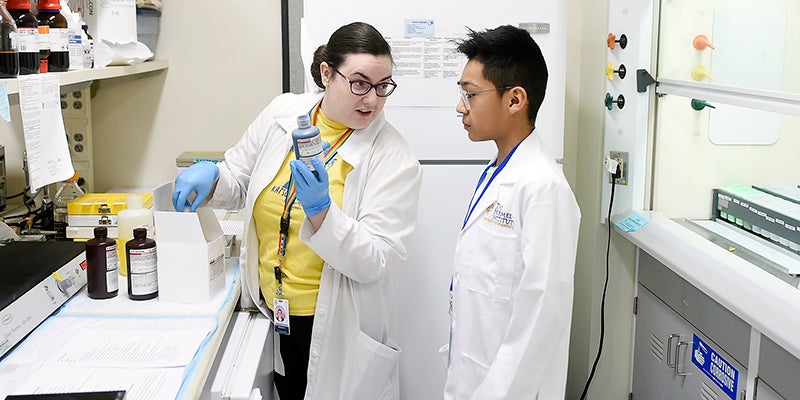Ready. SET. Go
Published 4:57 pm Wednesday, March 8, 2023
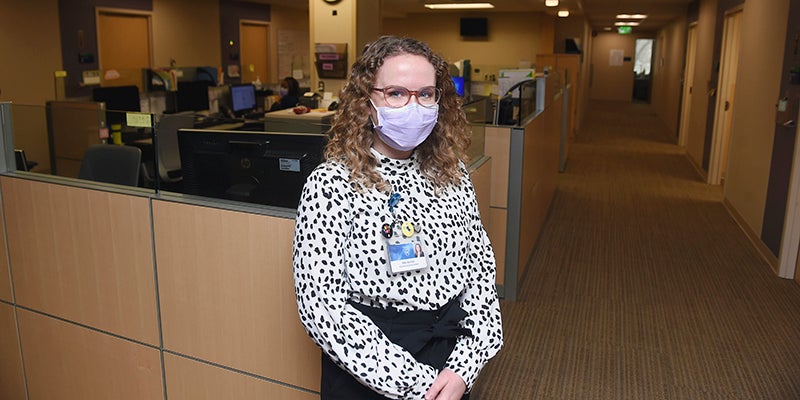
- Ellie Gertner is a physician assistant student in her second rotation with SET. She said the experience has given her opportunities that are setting her up for a more well-rounded career. Eric Johnson/photodesk@austindailyherald.com
|
Getting your Trinity Audio player ready...
|
Mayo’s SET clinic gives students opportunity to learn under providers
Continued education is at the core of development for those coming into the medical field as they discover new ways to treat patients using the latest technology and techniques derived from science.
But treating the patient and caring for the patients are sometimes two different things. A fairly new program at the Mayo Clinic is guiding future physicians and nurses down a path that not only puts them in a better position to treat patients, but interact with them as well.
The Student Education Team (SET) is pairing students with physicians to further refine how they interact with patients on a daily basis. Originally started in Mayo Clinic Health System’s Eau Claire, Wisconsin location around 2018, the program has now come to Austin.
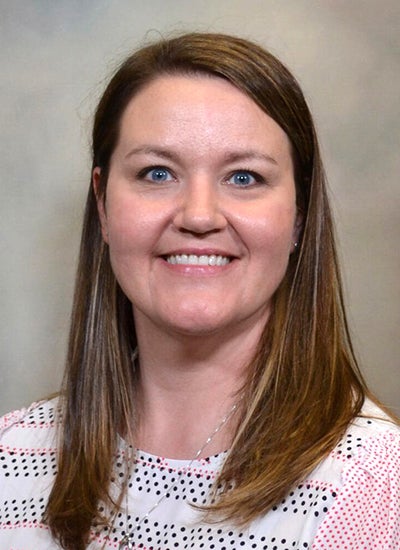
Sarah Sistek
“A [nurse practitioner/physician assistant] or doctor is in charge of the education of the student learner,” said Sarah Sistek, director of the SET Clinic. “It’s just teaching how to be a provider. Ultimately, be in charge of the patient; just teaching these learners how to take care of the patients.”
The SET clinic is part of the core education of students already enrolled in medical institutions and is set up in rotations. Oftentimes the student, who is paired with one of several medical professionals through a day, is the first to see a patient.
In Austin, there is a core group of four providers who share a passion for education. Each rotation takes up to four learners.
What they learn during these rotations is used to augment the medical education they are already receiving.
“They have had a lot of education as far as going to school and learning how to take care of patients, but it might be one of their first exposures working one-on-one with a patient,” Sistek said. “Some of them, it may be their last rotation. It really depends on where they are in their education.”
In a broad sense, the experience of SET guides students on how to interact with patients, but that exposure can be easily broken down into specific areas that are all part of patient interaction.
“I think it teaches students all aspects of patient care,” Sistek said. “Certainly communication with patients, learning disease processes, learning diagnosis, basic history taking skills, exams, diagnostic test selection … things like that.”
A valuable part of the learning process comes down to those that do the teaching. Throughout the student’s rotation, they will get the opportunity to learn from all of the providers in Austin’s SET clinic. While they all practice the same evidence-based medicine, the providers may have different ways of going about their own interactions.
It’s a chance for insight the students may not necessarily get at this level.
“It gives them the opportunity to have a lot of exposure to different practice styles, which is helpful to make them a well-rounded provider,” Sistek said, adding that it’s a two-way street. “I really like how that works. Maybe I have an interesting experience with a student; so and so taught me this so I have the opportunity to learn from the student as well. I think it’s been a real positive experience.”
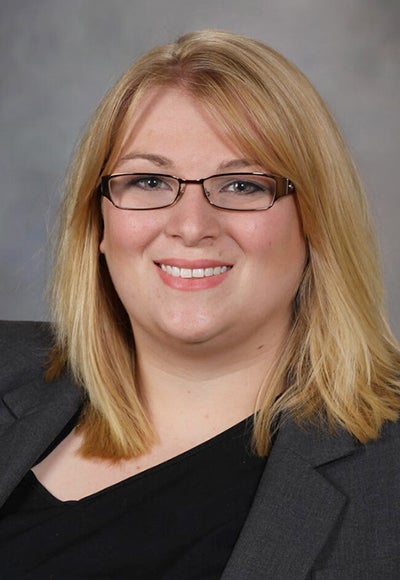
Heather Talley, MD Family Medicine
Heather Talley, MD Family Medicine, is one of the providers helping guide students through the SET clinic. She’s seen personally the advantage of team-based education for the students on rotation.
“We used to work with students on a one-to-one basis so we would have them come in and rotate with individuals,” Talley said. “With the start of SET, we’ve been able to centralize all of the students and really increase the amount of education that we’re providing. Morning, lunchtime talks — we’re able to get students bouncing ideas off each other and off the team.”
Talley also said that the experience for patients has been positive as well.
She said that while patients will eventually see a doctor, the opportunity to talk with a student first is allowing them more time to get information about what they have come to the hospital for.
“These are neighbors in our community and they are coming in with their routine health,” Talley said. “When they are scheduled they know they are going to be with a provider after the student. They get extra time to be able to talk and make sure their concerns are addressed. Really dig deep into what’s going on and be able to provide more education in the room and through the patient teaching the students.”
Ellie Gertner is a physician assistant student and was in her second SET Clinic rotation in January.
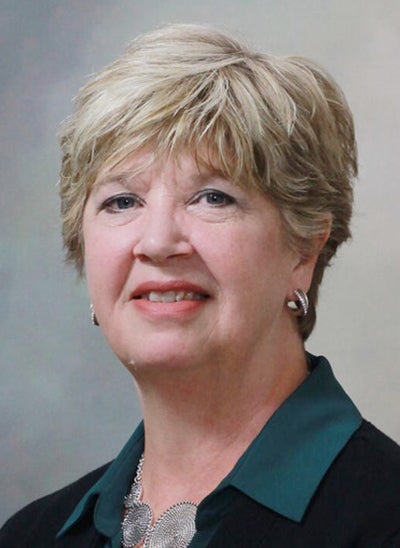
Rita Moier, operations manager.
Gertner, who has wanted to practice medicine since high school, said the SET experience has had a profound impact on her education.
“They just have access to so many things that I feel like you might not get elsewhere,” Gertner said. “I really love SET as a rotation opportunity. I don’t have any other [opportunity] like this. Getting the opportunity to act like the provider and be the provider rather than following someone else’s schedule has really improved my skills and ability.”
Gertner said aside from giving her valuable insight into medicine, it’s impacted her personally as well.
“I think it builds confidence and your ability to be a provider,” she said. “I think if I just went out into the world after just 12 months of shadowing the provider, I would not feel as confident as I maybe do right now.”
With SET being such a new program, it’s hard to know what the exact future might be and how far it might travel within the Mayo Clinic Health Systems network. Currently, Austin and Eau Claire are the only two sites that have SET clinics.
One thing that has become clear, however, is that its effects are possibly being seen outside of the set clinic.
“I think it also serves beyond the students and the core faculty,” said Rita Moier, operations manager. “It’s a recruitment for other physicians or other nurse practitioners who have an interest in teaching, ‘I want to be a part of that education that Austin is doing. That’s a practice I want to be a part of.’”
Gertner said that she hopes that other students will consider the opportunity.
“I wish more of my classmates could do it,” she said. “I hope this kind of program gets placed in other Mayo Clinic sites. Hopefully future students can have this opportunity.”


